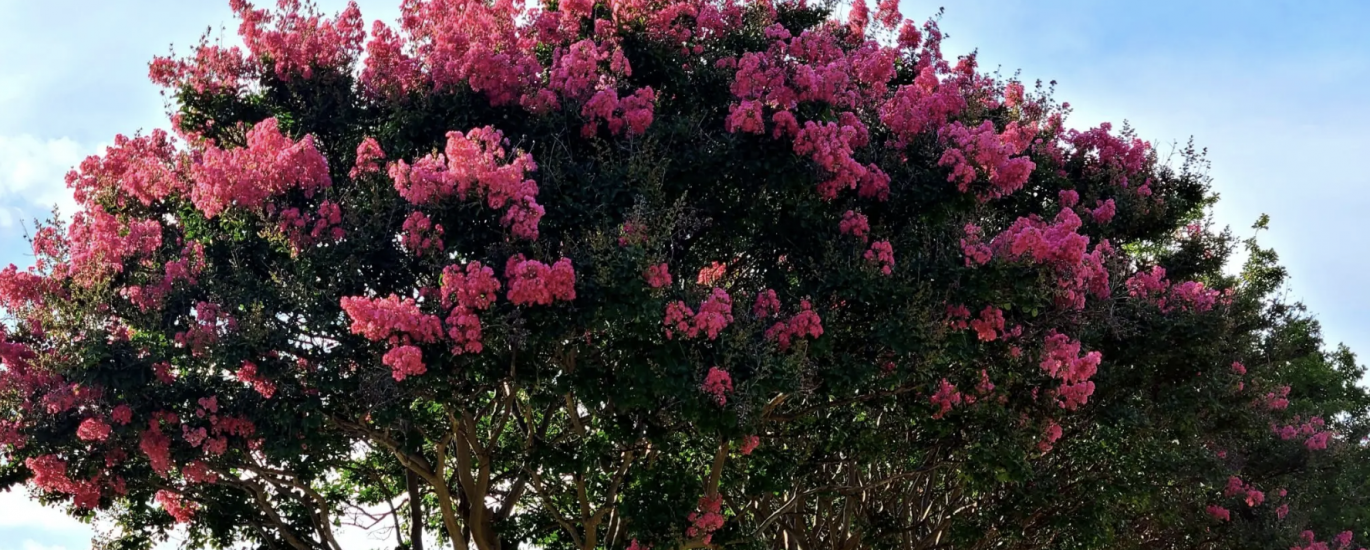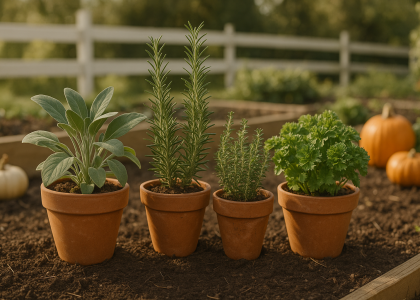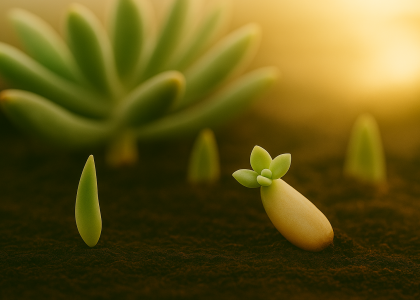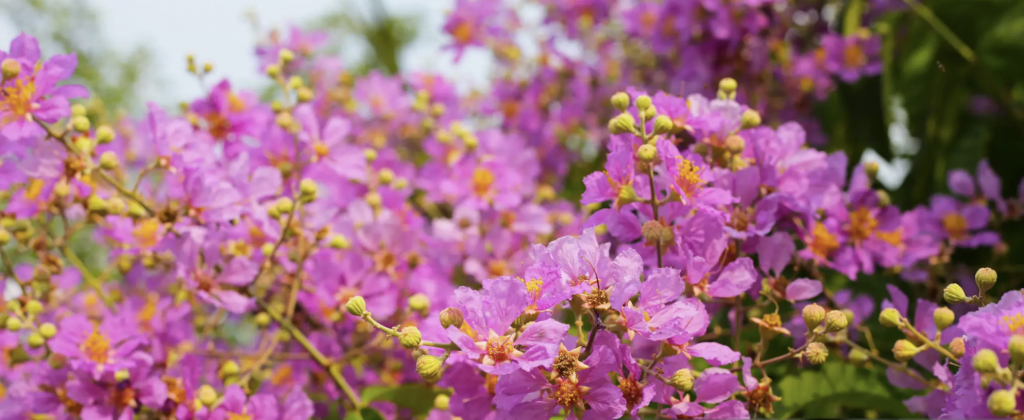
Fallen for those dazzling summer blooms? Let’s bring them home. Start your crape myrtle journey with this hands-on growing guide.
When to Plant
- Best time: Early spring (after last frost) or late fall (before ground freezes)
- Avoid: Summer transplanting unless rootbound in pots
Planting Tip: Fall planting encourages stronger root development for spring bloom.
Where & How to Plant
Ideal Conditions:
- Sunlight: Full sun (6–8 hrs/day)
- Soil: Slightly acidic, well-drained
- Spacing: 6–10 ft for trees, 3–5 ft for shrubs
Step-by-Step Instructions:
- Dig a hole 2× as wide as the root ball and just as deep
- Backfill with compost-rich soil
- Water deeply, then apply 2–3 inches of mulch
- Stake only if newly planted tree is unstable
Estimated planting cost: $20–50 (depending on variety + soil amendment)
Weekly & Seasonal Maintenance
| Season | Task | Details |
| Spring | Light prune | Remove deadwood, shape growth |
| Summer | Deep water | Every 7–10 days for young trees |
| Fall | Mulch, reduce water | Avoid wet soil in dormancy |
| Winter | Zone 6? Wrap trunk | Protect base with burlap or plant in pots |
Bloom Boost Tip: Feed with a phosphorus-rich fertilizer (e.g. 5-10-10) in early spring. The numbers 5-10-10 refer to the N-P-K ratio: 5% nitrogen (N) for leafy growth, 10% phosphorus (P) to promote flower and root development, and 10% potassium (K) for plant health and bloom longevity. Apply once in early spring as buds begin to swell, optionally repeat in early summer. Evenly spread around the root zone, gently mix into the soil surface, and water thoroughly. Avoid fertilizing in peak heat to prevent stress.
Pruning Without Crape Murder
"Don’t chop. Shape."
- Avoid topping trees (destroys natural shape and reduces bloom)
- Prune only in late winter or early spring before budding
- Keep a multi-trunk or vase shape for airflow
- Remove suckers from base regularly
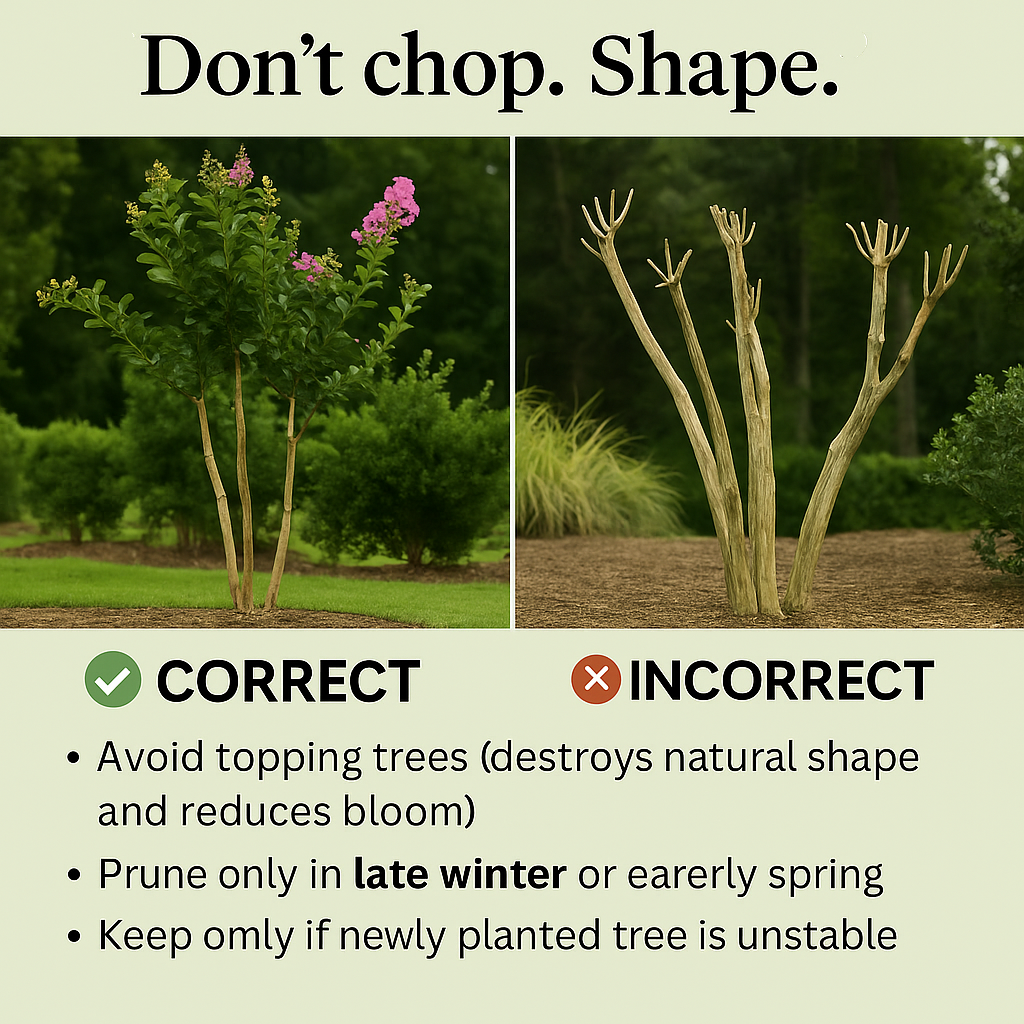
Common Problems (And Real Fixes)
| Issue | Symptom | Natural Remedy |
| Aphids | Sticky leaves, ants | Neem oil spray or release ladybugs |
| Powdery mildew | White film on leaves | Increase sun exposure, prune dense growth |
| Leaf spot | Black dots on foliage | Remove infected leaves, avoid overhead watering |
| No blooms | All leaves, no flowers | Check for shade or excess nitrogen fertilizer |
Container Gardening with Crape Myrtle
- Use dwarf cultivars: ‘Chickasaw’, ‘Dazzle Dwarf’
- Pot depth: 18–24 inches minimum
- Soil: Loamy + peat-based mix with good drainage
- Overwintering in Zone 6–7: Move to bright, frost-free garage or wrap
Bonus: Crape myrtle in pots can be trained as bonsai-style showpieces!
Companion Planting & Design Pairings
| Companion | Benefit |
| Russian sage | Color harmony + drought tolerance |
| Coneflowers | Attracts pollinators & echoes warm tones |
| Lavender | Aromatic + bee-friendly |
| Boxwood | Structured evergreen contrast |
| Catmint | Filler between trunks, attracts pollinators |
Crape Myrtle FAQ
Q: Can I grow crape myrtle in clay soil?
A: Yes, but improve drainage by mixing in compost, sand, or peat moss.
Q: How long until my crape myrtle blooms after planting?
A: Typically 1–2 years if planted as a young tree and given good sun.
Q: Is crape myrtle deer-resistant?
A: Yes, crape myrtle is generally avoided by deer due to leaf texture.
Q: Can I grow it indoors over winter?
A: Dwarf types in pots can be moved indoors near a sunny window for overwintering.
Free Download: Printable Crape Myrtle Care Kit
Includes:
- Monthly care checklist
- Fertilizer tracker
- Pruning calendar
- Pest log template
Grab your free PDF now,Download Here!
From pot to pollinator paradise, let your crape myrtle thrive with purpose and poise.
Grow beautifully. Grow with Greenmuse.

